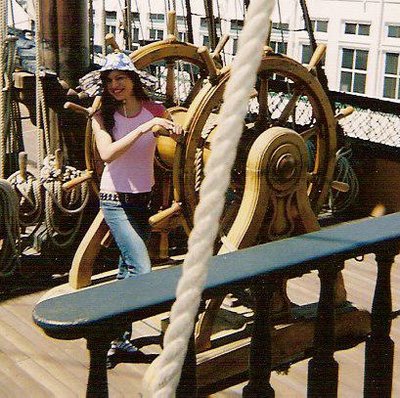Sunset Over Hobart

Hobart, Tasmania is Australia's Antarctic gateway and a frequent rest stop for MV AURORA AUSTRALIS. Saturday Hobart is home to the famous Salamanca Market, right by the pier where we are docked. If one gets hungry, barges selling fish and chips are docked by the waterfront. Tasmania has enough wildlife and scenery to keep one occupied for weeks.
Clifford of Cosmic Variance has started his own blog, Asymptotia. The latest post has pictures of a science fair in California. One young woman's project uses a telescope to test Copernicus' cosmology. She concludes, like Galileo before her, that the Copernican system fits observations better than Ptolemy's Earth-centred system.
Anyone observing the planets will see them periodically appear to travel backwards in the sky. To explain this retrograde motion, the Ptolemaic cosmology relied upon epicycles, spheres within spheres. By Galileo's time, scientists touted cosmologies with 60-100 epicycles to explain all the planetary motions. The complexity of math required for epicycles ensured these scientists their elite place in society.
Just as anyone can observe retrograde motion of planets, the CMB shows that c was much faster even at time of recombination. To explain this, a repulsive 'inflaton" field is inferred (Epicycle #1). Evidence from Type Ia supernovae and large-scale structure shows that the ratio v/c is accelerating. To explain cosmic acceleration, one must infer another repulsive "dark energy" (Epicycle #2). These energies can not be isolated any more than you can capture the emperor's new clothes. A GM=tc^3 cosmology fits the data far better than any Concorde model, without imaginary energies.
We should wish the young woman in the science fair well. Even if her theory fits the data better, it will be difficult even publishing papers. People will say that Concorde cosmology with its epicycles fits the data too. In Galileo's time, scientists refused to peer into the telescope for fear of upsetting their world view.
Below are the ruins of Port Arthur, Tasmania's penal settlement. There is endless beauty in the Universe if we just open our eyes.






















